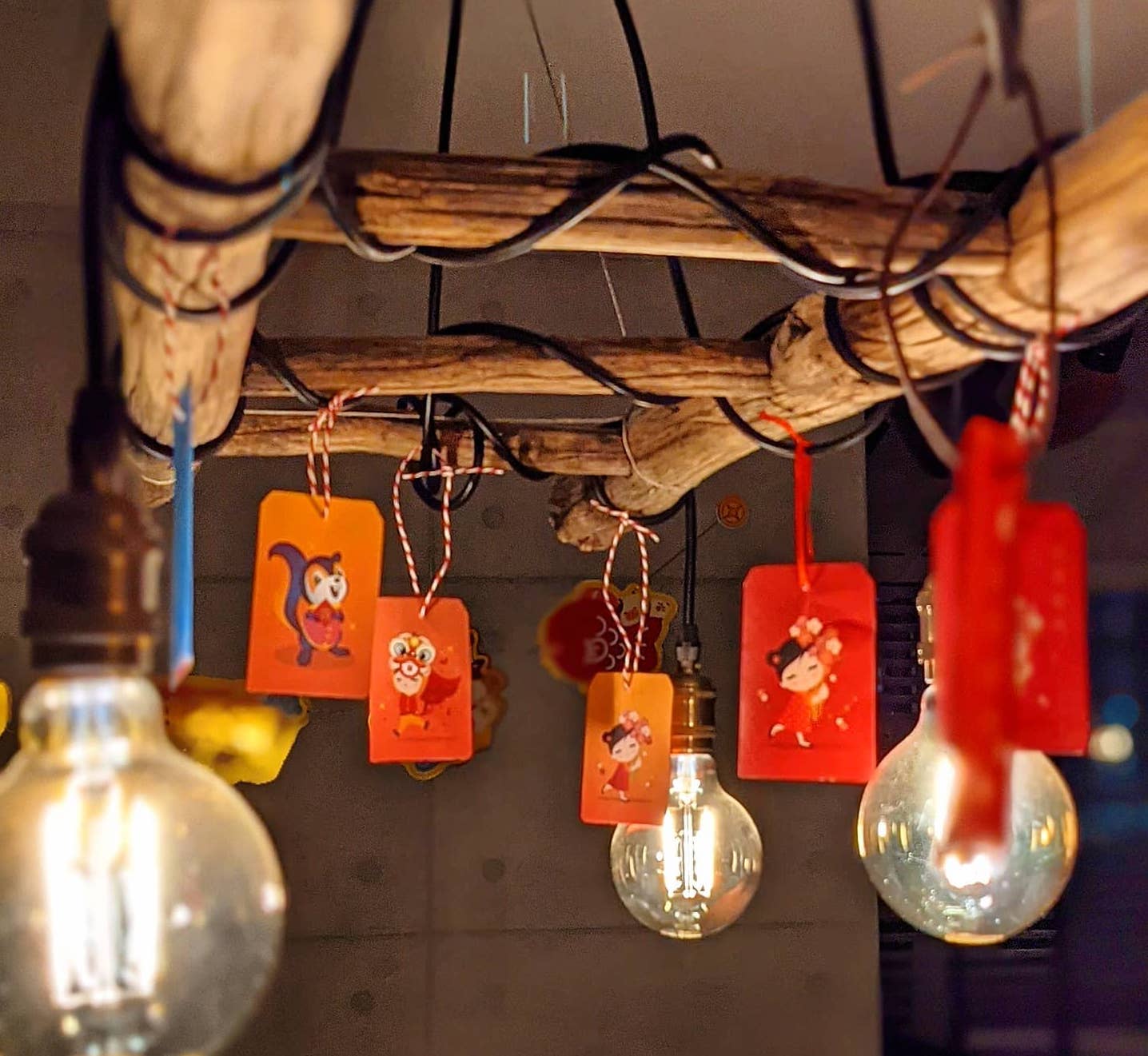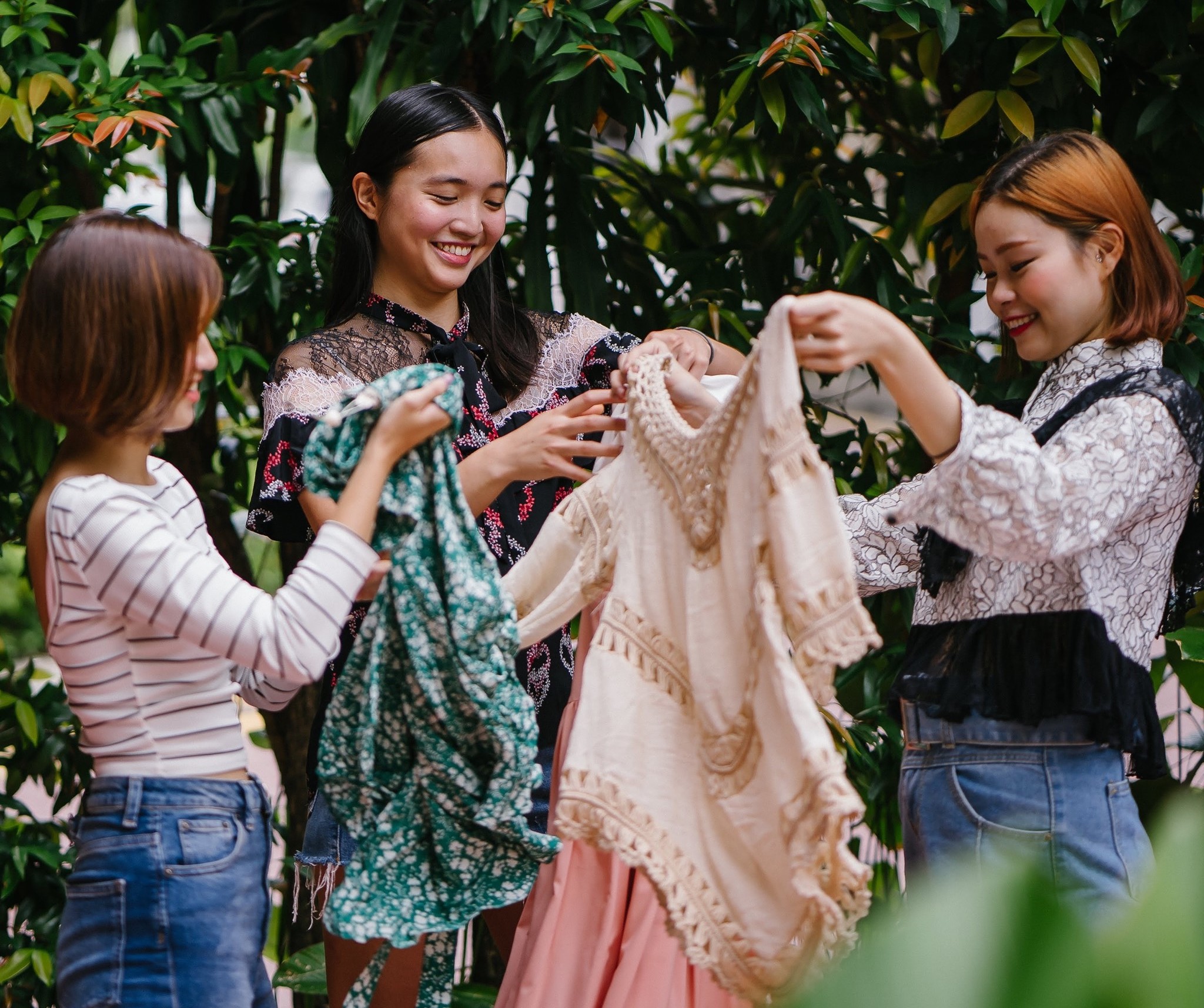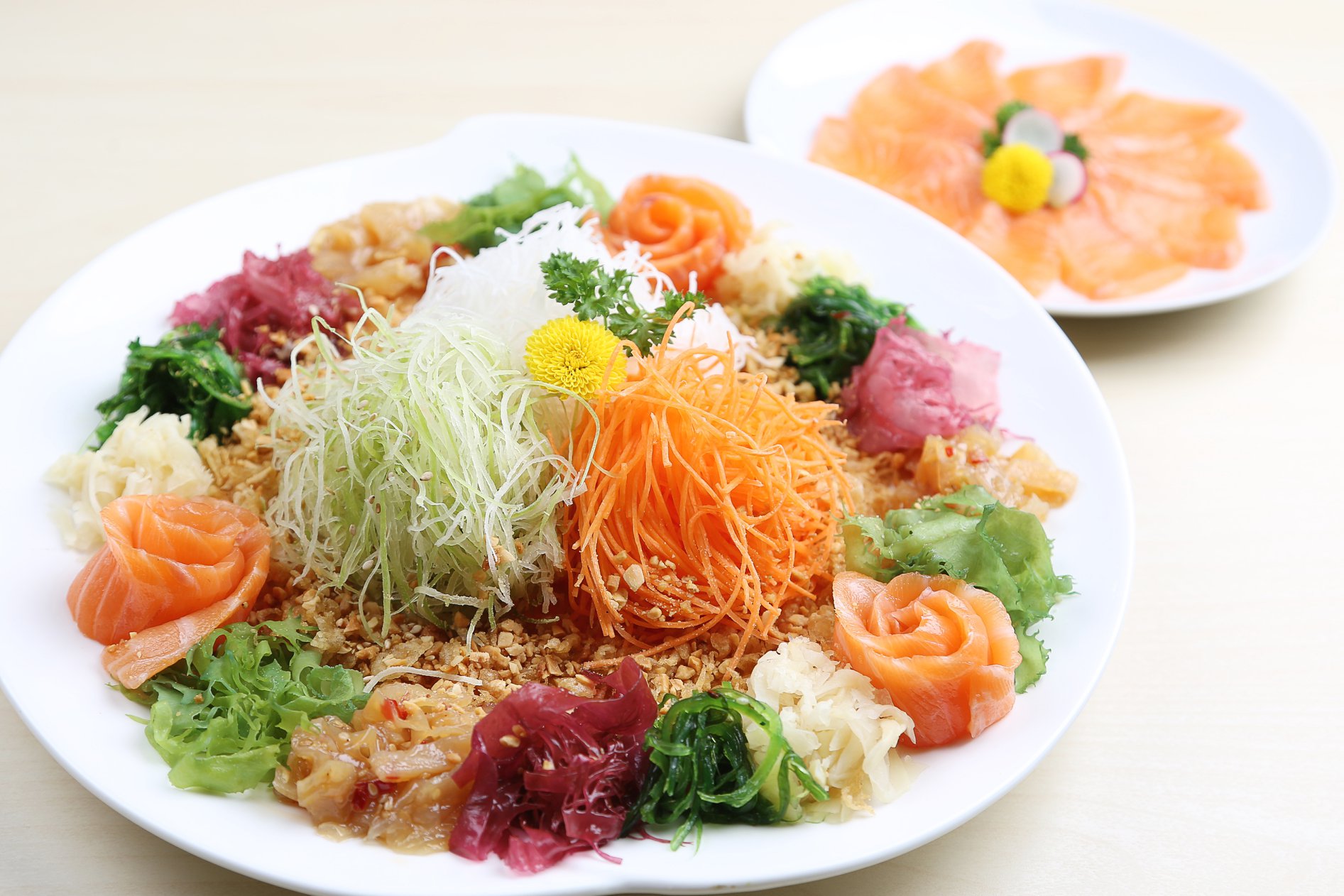The advent of the Lunar New Year not only signifies a chance to leave past troubles behind and make a fresh start, it also represents a time of excess – an excess of caloric indulgence in the form of buttery kueh lapis, smoky bak kwa and more; an excess of expenditure on account of all those hong baos and shopping sprees; an excess of prying questions and unsolicited advice from overly inquisitive relatives; and, unfortunately, an excess of waste dumped in the landfill at the end of the 15-day of festivities.

The statistics on waste are staggering. Every year, tens of thousands of trees are cut down to churn out the millions of red packets that are exchanged and then quickly discarded once the cash inside has been retrieved, while literal tons of leftovers are thrown away each day (food waste increases by almost 20 per cent over the CNY period), and heaps of cast-off clothes are chucked out after the annual spring clean.
It begs the question: What can we do differently to fête the Lunar New Year in a more eco-friendly manner? Here are a few tips and tricks to help you get serious about sustainability in the Year of the Ox and beyond, because green is the new red.
Red Packets
The tradition of giving and receiving hong baos is an integral part of the CNY celebrations – especially so for the young and the single – but what’s to be done with the empty or extra envelopes you have lying around?
Reuse
A simple way to help save the trees would be to keep the hong baos you’ve amassed for reuse during the next festive season, or at the next wedding or birthday party you’ll be attending. Alternatively, you could get creative and upcycle the envelopes into DIY decorations, handmade cards, and the like.
Check out these crafty ideas for some inspiration.

Reduce
Consider gifting your loved ones a digital red packet instead of a physical one. Most of the major banks here have already rolled out e-hongbao services, which allow you to send money via a PayNow transfer or a scannable QR code. Depending on which bank you’re with, there are different designs to choose from, and you can even customise the greetings and graphics that appear on the e-hongbao.
If you can’t do without the real thing, however, you could still go for hong baos that have slot-in rather than glue-down flaps (for greater ease of reuse), non-zodiac-themed red packet designs (so you can give them away every year versus every 12 years), or those made from biodegradable materials and FSC-certified paper stock.
Recycle
Another eco-friendly option would be to drop off your stash of hong baos at one of the many recycling bins dotted across the island, such as at the Takashimaya Level 1 Atrium, the Orchard Central Uniqlo store and the Outfyt boutique along Haji Lane, as well as at all OCBC, DBS and POSB outlets, and all REFASH, IUIGA and CRU locations. The hong baos collected will be recycled into paper products such as cardboard boxes and toilet roll.
Check out the list of recycling bin sites here.
READ: I Try Going Zero Waste for a Week…and Failed

Auspicious Attire
Symbolising new beginnings and fresh hopes, it’s customary to deck yourself out in brand-new clothes when you go out to bai nian. But while this practice may be conducive to your self-esteem, it comes at a high cost to the planet.
Fashion – and in particular, fast fashion – is a huge contributor to environmental pollution. The industry racks up more greenhouse gas emissions than all international shipping and flights combined, while three-fifths of all clothing ends up in landfills and incinerators within a year of being produced, and half a million tonnes of microfibres (equivalent to 50 billion plastic bottles) are released into the ocean per annum because of the washing of clothes. Singapore alone generates roughly 168 tonnes of textile and leather waste each year.
That’s not to say you have to abandon centuries of tradition, but you’d do well to keep sustainability in mind as you approach your annual wardrobe update.
Do a swap
Break out of that buy-and-throw-away mindset and try a round of clothes swapping instead. The concept is simple: gather up the items in your closet that no longer “spark joy”, bring them to a swap shop for appraisal, use the points or credits you’ve accrued to shop from the range of pre-owned pieces on offer, and voilà, you’re sorted for CNY. What’s more, by trading in just one t-shirt in lieu of buying it new, you could save 2,700 litres of water and reduce its carbon footprint by 82 per cent!
Check out The Fashion Pulpit and Swapaholic, or organise your own clothes swap party with friends, family and colleagues.

Buy secondhand
The word “secondhand” may carry a negative connotation, but there’s actually a vast trove of hidden fashion treasures just waiting to be discovered in pre-loved stores and sites like Style Tribute, Vestiaire Collective, A Vintage Tale, Refash and New2U, where you can find everything from covetable luxury goods to retro threads to high street apparel.
Road-test renting
It’s the stuff of dreams for fashion aficionados – a wardrobe overflowing with thousands of chic outfits and trendy accessories, right at your fingertips. Well, it’s a dream that could turn into reality with rental platforms such as Style Theory, MADThread, Rentadella, Style Lease and Covetella, where you can “shop” to your heart’s content without busting your budget or destroying the environment. It’s a win-win!

Shop sustainable
If you really want to treat yourself when it comes to style, then spend your money where it counts, and preferably on brands that take care of both people and planet. Thankfully, there are plenty of local labels that fit the bill, employing ethical manufacturing processes and focusing on sustainable materials like Lyocell (derived from wood pulp), Piñatex (extracted from pineapple leaves) and deadstock fabrics. Such homegrown enterprises include fashion labels Dear Samfu, Bare Label, Esse, Source Collections and more, as well as jewellery brands like Woon Hung, Amado Gudek and Covenant Jewellery.
READ: Is Sustainability Only for the Affluent?

Spring Cleaning
Doing a big spring clean prior to CNY isn’t just about making your humble abode presentable to visitors, it’s also an important ritual that’s symbolic of driving away the bad luck of the previous year and welcoming in good fortune in its place.
Donate
Once you’ve KonMari’d your home, though, don’t toss your unwanted stuff the bin – give your oldies-but-goodies to thrift stores and charitable organisations instead. After all, one man’s trash is another man’s treasure, and you could be helping a fellow human being by donating what you don’t need.
The list of places that accept donations is a lengthy one, but if you’re not sure where to begin, try The Salvation Army, the Star Shelter, the Humanitarian Organisation of Migrant Economics (HOME), the Metta Welfare Association, the Movement for the Intellectually Disabled of Singapore (MINDS) and Blessings in a Bag, or check out online platforms like Pass It On and SGFREECYCLE.
Go green
Additionally, you might want to think about switching up your spring cleaning routine before you start spraying and scrubbing every surface in sight. Many cleaning products contain toxic ingredients such as triclosan, 2-butoxyethanol, phthalates, chlorine and sodium hydroxide, the exposure to which is linked to a range of adverse health effects from hormone disruption to respiratory irritation to cancer. Not to mention that these harsh chemicals are detrimental to the environment when they get rinsed back into the water system.
Fret not, though, because you can always rely on eco-friendly household brands (we recommend Bio-Home and Ecover) to get the job done. Or you can have a crack at concocting your own natural cleaners with combinations of vinegar and baking soda, lemon and salt, or mandarin orange peel and white vinegar. With a pinch of elbow grease, you’ll have your house looking spick-and-span in no time.
READ: Everything You Need to Know About Dover Forest’s Redevelopment
Food and Drink
Besides the obvious appeal of free money, the highlight of the Lunar New Year has to be the abundance of special snacks and delicacies just begging to be eaten. If we’re being honest, though, we probably haven’t given much thought to the (negative) impact of our festive feasting on the environment.
Seafood
It’s a staple of the reunion repertoire, but how sustainable is the seafood in your yu sheng, pen cai, hotpot et al.? The answer would likely be, not really. Here’s a couple of not-so-fun facts: 85 per cent of the world’s fishing grounds are now overexploited, while an estimated 10 per cent of commercial fishermen work under conditions classified as slave labour.

It pays to do some homework before you go grocery shopping, so you can be sure you’re not exacerbating the problem. Familiarise yourself with the WWF’s Singapore Seafood Guide – it tells you which species of fish to buy and which to avoid – and should you want to find out more about where your fish comes from, you can check out the Global Slavery Index or watch the documentary Ghost Fleet.
Snacks
We know, it’s hard to resist the pineapple tarts, sugee cookies and other nibbles that pop up everywhere during the festive season. However, do try to keep an eye out for palm oil derivatives (disguised as margarine and vegetable shortening) on food labels, because this ubiquitous ingredient is a major driver of deforestation – over two million hectares of land are cleared every year to make way for palm oil plantations, affecting some of the world’s most biodiverse forests and adding to air pollution. You don’t have to stop snacking, but you can snack wisely.

P.S.: Check out Project bECOme’s CNY initiative, which aims to slash food packaging waste by encouraging businesses and customers to adopt a circular model.
READ: Social Change Starts With You: Issues To Think About
Oranges
Mandarin oranges are a must-have for CNY, so if it is within your means, consider buying organic fruit, which is grown without the use of synthetic herbicides, pesticides, fertilisers and bioengineered genes, and is therefore better for you and for the environment. You could also invest in a crate of oranges rather than individually-wrapped fruit to cut down on the amount of plastic packaging waste.

Donate extras
You’ve stocked up on too much food to finish, now what? Donate your spare supplies to the less-fortunate, of course. Check out the Food Bank Singapore, Food From The Heart, ItsRainingRaincoats, and the Lions Home For The Elders to see what you can do to help.
Join the conversations on THG’s Facebook and Instagram, and get the latest updates via Telegram.














